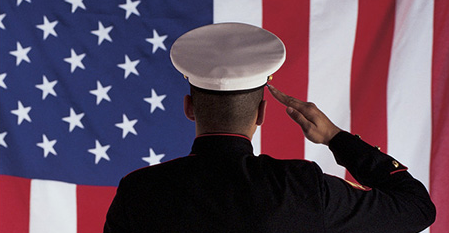In honor of Veteran’s Day, we welcome yet another guest post by Nick Swaggert, former Marine infantry officer and Director of Genesis10’s Veteran’s Program. With the war for talent escalating in the U.S. and around the globe, Swaggert’s advice on how to bridge communications and cultural gaps between U.S. military veterans and corporate hiring managers is well timed.
The veteran’s employment issue can be distilled to two simple causes:
- Veterans don’t know how to transition into the civilian world
- Companies don’t know how to hire them

We have both communications and cultural gaps. While we have tried to tackle the problems of veteran unemployment and underemployment with quick-fix solutions - websites and their get-rich-quick cousins, web-based job boards in skills translation solutions – they are failing to produce noticeable results. Veterans who have served in the Global War on Terror still have a 50% higher unemployment rate compared to non-veterans.
There’s no shortage of websites or so-called web ‘solutions’ either: nearly every week I read about a new veteran website launch: the overly simplistic Military.com skills translator, the content rich Employer Roadmap and the clumsy Veterans Affairs e-benefits site to name a few.
Technology will not do the hard work for us. The launch of yet another veteran’s employment website will not bridge our communications and cultural gaps, especially where so many other attempted web solutions have failed. Look no further than the latest revolutionary Web-based educational initiative, the Massive Open Online Courses (MOOCs) in which only 4% of enrollees are actually completing their courses.
Technology, while useful, is just a tool, not a cure-all solution. Leadership is what we need to solve our communications and cultural gaps, and leadership will always come from people.
Fortunately, there is leadership from the White House in making veteran’s employment a national issue, but it may come with unintended consequences. Three years ago, First Lady Michelle Obama and Second Lady Jill Biden launched the Joining Forces initiative – a task force dedicated to helping veterans land good jobs. I had the opportunity to hear the First Lady speak at an Army base in Kentucky last spring. Her powerful words stuck with me:
“My husband, President Obama, believes that no veteran should have to fight for a job at home after they fight for our nation overseas.”
As she said this, I looked around the room and saw that the majority of veterans in the audience were in their early 20’s. According to the Bureau of Labor Statistics, veterans below the age of 25 are unemployed at a rate of 14.9% across the nation, nearly 50% greater than non-veterans of the same age at 10.7%.
An unintended consequence of the First Lady’s statement is that we send a message to young service members that someone else will be personally invested in landing them jobs. But that is not actually true. As many of us know, finding a job is difficult – it requires resume-writing skills, interviewing abilities and networking. In the military, these three job search techniques don’t exist as you are simply given your next assignment. Resume writing is a particular skill that atrophies as veterans’ work histories are literally emblazoned on their chests in the form of ribbons denoting places served, medals showing accomplishments, badges signifying certifications, service stripes for years of service and rank insignia denoting work levels.
The First Lady’s message also exacerbates the employer side of the problem as well because, in order to effectively hire veterans, companies need to update traditional HR sourcing, resume review and interviewing techniques. But, while companies are being told to hire veterans, most don’t have the time or experience to do it. To be effective in hiring more veterans, companies need to socialize atypical hiring ideas with their managers and that requires a certain level of understanding of both military and corporate cultures. Knowing and understanding where veterans fit into your organization takes work and ultimately takes people understanding people.
Despite the challenges, there are business leaders who truly see value and understand the business case for hiring veterans, which encompasses strong technical training, disciplined work ethic and high degrees of adaptability. Seven Fortune 500 companies and a handful of other smaller organizations have committed to working with Genesis10 on identifying roles where veterans can be particularly successful. These leaders haven’t just hung a “we hire veterans” sign on their web pages; rather, they have the moral courage and business foresight to earmark certain business and technology roles to be filled by veterans. These visionary leaders believe something that I know to be true: hiring veterans is both the right thing to do and gives businesses a distinct competitive advantage to get an edge in the war for talent.














